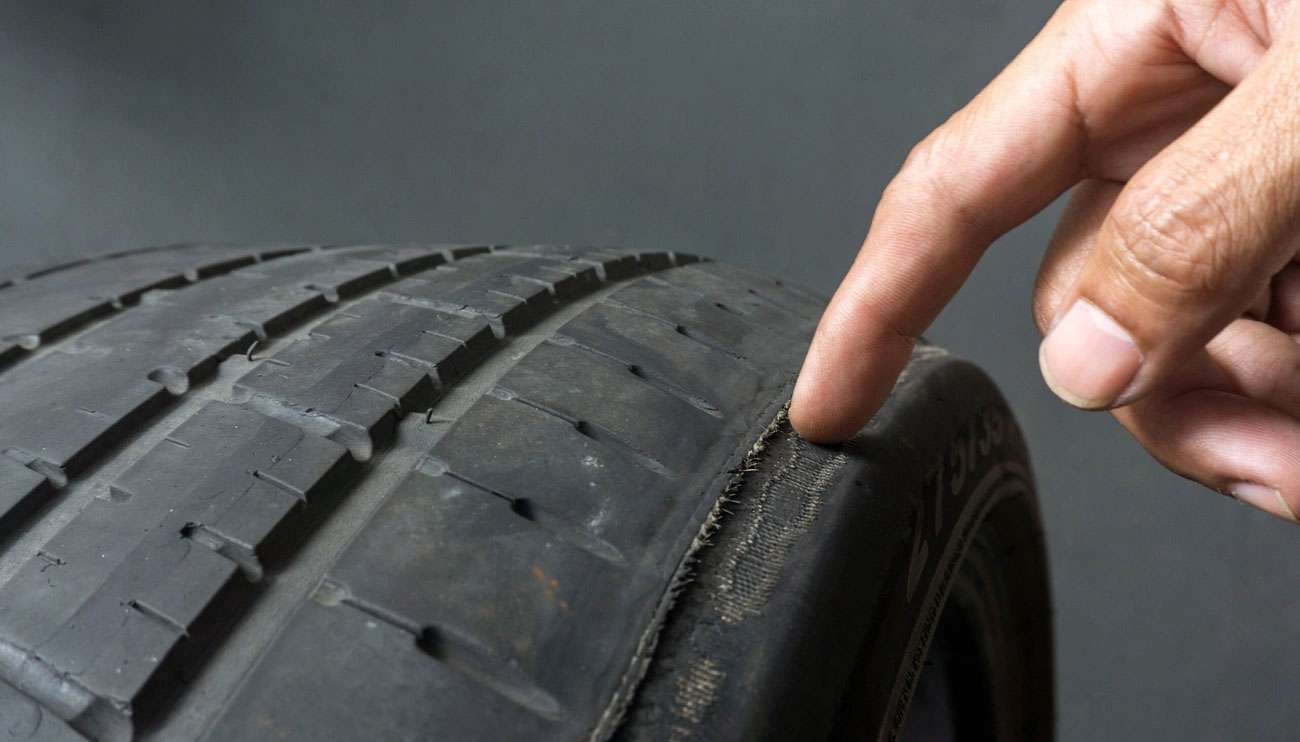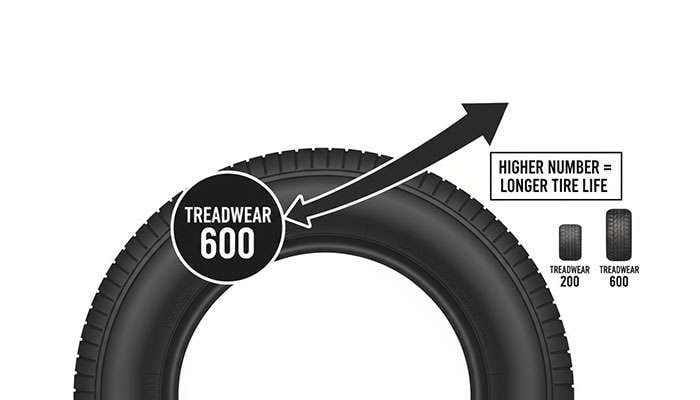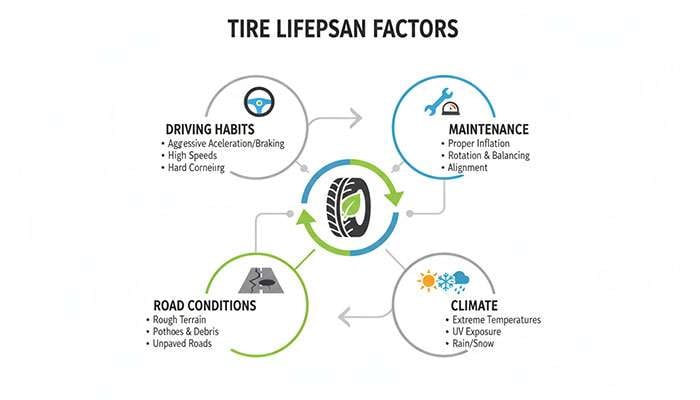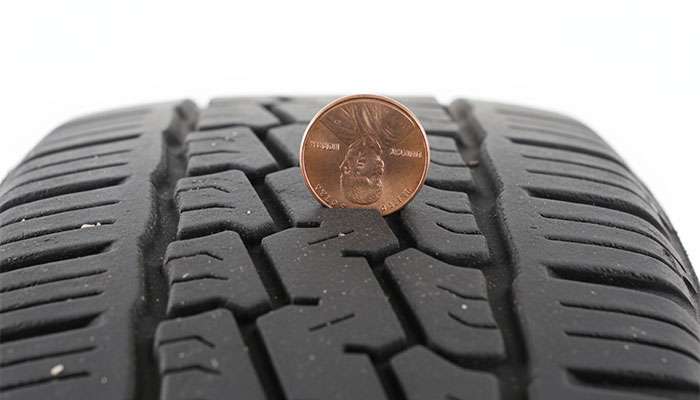
Drivers face three times higher crash risk when dealing with poor tire condition, according to the National Highway Traffic Safety Association (NHTSA). Understanding tire lifespan becomes essential for both your safety and your budget.
Most passenger car tires deliver between 40,000 and 60,000 miles under normal driving conditions. Consumer Reports testing reveals even better results – many family-car tires easily reach 70,000 miles or more. With typical drivers covering 12,000 to 15,000 miles annually, quality all-season tires usually last three to five years. Poor maintenance cuts this lifespan in half.
We'll break down everything about tire longevity, from mileage expectations to replacement signals. You'll discover how tire types, driving patterns, and maintenance choices impact your tire's lifespan. Our expert guidance helps you maximize both safety and value from your tire investment.

Tire mileage potential varies significantly across vehicle types and driving conditions. Most passenger car tires deliver 40,000 to 60,000 miles under normal driving circumstances. Consumer Reports' extensive testing shows even better performance – many family-car tires reach 70,000 miles or more.
All-season tires typically deliver 50,000 to 70,000 miles. This range depends on tire quality and vehicle specifications. Toyota vehicles often achieve 60,000-75,000 miles per tire set, while Tesla vehicles may only reach 30,000-40,000 miles due to increased torque and battery weight.
Here's what you can expect from different tire types:
All-season tires: 50,000-85,000 miles
Performance tires: 30,000-40,000 miles
All-terrain tires: 40,000-60,000 miles
Winter/snow tires: 30,000-40,000 miles
High-performance tires: 20,000-30,000 miles
Age matters as much as mileage. Tire lifespan ranges between 6-10 years, regardless of remaining tread depth. Most tire manufacturers, including Bridgestone, recommend service removal after ten years. Several automakers take a more conservative approach, suggesting replacement after just six years.
Even lightly used tires age rather than wear out. Tires require regular driving to keep rubber compounds effective. Oxygen naturally reacts with rubber compounds, causing gradual degradation. UV radiation exposure accelerates this deterioration process.
Treadwear warranties indicate manufacturer expectations for tire longevity. These warranties typically span 30,000 to 100,000 miles, though actual performance varies. A tire with an 85,000-mile warranty should outlast one with only 60,000 miles of coverage.
These warranties include specific conditions. They expire after 4-6 years regardless of mileage and only apply when tires wear evenly down to 2/32" remaining tread depth. Premature replacement gets prorated based on unused mileage percentage, meaning you'll still pay part of the replacement cost.
Each tire type serves specific purposes with distinct longevity expectations. Choosing the right type for your driving needs directly impacts how often you'll need replacements.
All-season tires earn their popularity through versatility and exceptional longevity. These workhorses typically deliver 50,000 to 70,000 miles under normal driving conditions. High-quality all-season tires can reach 85,000 miles in Consumer Reports testing. Their balanced rubber compounds and moderate tread patterns handle most weather conditions effectively while maximizing tread life.
Performance tires trade longevity for superior handling and grip. Expect 30,000 to 40,000 miles from these tires. Ultra-high-performance versions last only 15,000 to 25,000 miles. Their softer rubber compounds maximize road contact and cornering ability, but wear faster than standard tires. Perfect for driving enthusiasts who prioritize handling over mileage.
Winter tires typically serve 3-4 seasons, though proper care extends this to 6 seasons. Since winter driving averages 4,492 miles per season, these specialized tires see limited annual use. Proper off-season storage becomes critical – poor storage conditions significantly shorten their useful life.
Off-road tires sacrifice longevity for rugged terrain capability. Most deliver 20,000 to 50,000 miles. Their aggressive tread patterns and softer compounds handle harsh conditions but wear faster on pavement. All-terrain variants reach 30,000-50,000 miles, while mud-terrain tires typically last 20,000-40,000 miles.
Electric vehicles create unique tire challenges. EVs experience approximately 20% faster tire wear compared to gasoline vehicles. Battery weight (around 1,000 pounds) and instant torque delivery accelerate tire wear through aggressive acceleration. Specialized EV tires help address these challenges while maintaining energy efficiency.

Multiple factors determine how many miles your tires will deliver. Understanding these elements helps you maximize your investment while maintaining safety.
Your driving style dramatically impacts tire longevity. Aggressive acceleration forces excessive friction against the road surface. Hard braking creates similar wear patterns but concentrates damage on specific tread areas. Fast cornering places extreme lateral loads on tire shoulders.
Studies reveal these habits can reduce tire life by up to 25%. One tire manufacturer found poor driving behavior causes the most severe wear patterns. Smooth, moderate acceleration and braking extend tread life significantly. Making gradual turns rather than sharp ones also preserves tire integrity.
Surface quality directly affects tire wear rates. Rough pavement acts like sandpaper, gradually removing tread material. Potholes create impact damage that can compromise tire structure instantly.
Highway driving typically extends tire life compared to city streets. Cities present more frequent stops, sharp turns, and road hazards. When possible, choose smoother routes over damaged roads. Stay alert for potholes and debris that can cause immediate tire damage.
Temperature variations affect rubber compounds significantly. Extreme heat accelerates rubber degradation and increases wear rates. Hot climates can reduce tire life by 20-30% compared to moderate temperatures.
Cold weather makes rubber compounds brittle and less flexible. This brittleness increases cracking risk, particularly in sidewalls. UV radiation from sunlight also breaks down rubber over time. Vehicles parked outdoors experience faster aging than garage-kept cars.
Excess weight creates additional stress on tire structures. Heavy loads compress tires more, generating extra heat through increased friction. This heat accelerates tread wear and can cause premature failure.
Electric vehicles illustrate this principle clearly. Their heavy battery packs contribute to 20% faster tire wear compared to similar gasoline vehicles. Always follow your vehicle's maximum load ratings. Remove unnecessary items from your vehicle to reduce tire stress.
Proper inflation remains critical for maximum tire life. Underinflated tires by just 10 PSI can reduce tread life by 20%. Misaligned wheels force tires to travel sideways—being just 1/16th inch off alignment makes tires travel sideways for approximately 150 feet per mile. Regular alignment checks twice yearly prevent uneven wear patterns.
Proper storage extends the life of unused tires significantly. Store in cool environments between 32-77°F, keeping them dry and away from direct sunlight. Keep tires away from ozone-producing equipment like electric motors and fluorescent lamps. For mounted tires on stored vehicles, consider removing weight from tires or inflating to maximum sidewall pressure, returning to recommended pressure before use.

Knowing when to replace your tires keeps you safe on the road. Here are the critical warning signs that demand immediate attention.
Tread depth represents the most important safety measurement. When tread falls below 2/32 of an inch, replacement becomes legally required. You can check this easily with two methods:
The penny test: Place a penny into your tire's tread groove with Lincoln's head facing down. If you see all of Lincoln's head, your tread depth has dropped below 2/32" and needs immediate replacement.
Built-in tread wear indicators: Look for flat rubber bars that run across the tread. When tread wears down to these bars, you've reached 2/32".
Regular visual inspections catch dangerous structural problems early. Look for sidewall cracks, bulges, or blisters that signal potential blowouts. Even small sidewall damage typically requires replacement since these areas cannot be repaired safely.
Vehicle vibrations or handling issues often indicate tire problems. Watch for pulling to one side, excessive bouncing, or reduced steering response. When alignment and balance corrections don't solve these problems, your tires likely need replacement.
Tire age becomes critical regardless of visible wear. Find the DOT code on your tire's sidewall – the last four digits show manufacturing date (week/year). Most manufacturers recommend replacement after 6-10 years since rubber compounds break down over time, even with good tread remaining.
Tire lifespan knowledge protects both your safety and your wallet. Most passenger tires deliver 40,000 to 70,000 miles under normal conditions, with all-season options reaching up to 85,000 miles. Performance and winter tires typically provide 30,000-40,000 miles of service.
Age matters as much as mileage – rubber compounds break down after 6-10 years regardless of tread condition. Your driving style directly impacts tire longevity. Aggressive acceleration, hard braking, and fast cornering can cut tire life by 25%. Road conditions, temperature extremes, and improper inflation also accelerate wear.
The penny test quickly reveals when tread depth drops below the 2/32-inch safety threshold. Watch for sidewall damage, unexpected vibrations, or handling problems that signal replacement time before safety becomes compromised.
Regular maintenance extends tire life significantly. Rotate tires every 5,000-7,000 miles, check alignment twice yearly, and maintain proper air pressure. These simple steps maximize your tire investment.
At Performance Plus Tire, we carry the best selection of quality tires at the lowest prices. Our expert team helps you find the perfect match for your vehicle and driving needs. Visit Performance Plus Tire to discover tires designed for optimal lifespan and performance.
Your tires represent the only contact between your vehicle and the road. Proper selection, maintenance, and timely replacement ensure safe travels while maximizing value from every mile.
Understanding tire lifespan helps you maximize safety, performance, and value from your investment while avoiding unexpected roadside emergencies.
• Most passenger tires last 40,000-70,000 miles or 6-10 years, with all-season tires offering the longest lifespan at 50,000-85,000 miles.
• Aggressive driving habits like hard acceleration and braking can reduce tire life by up to 25%, while proper maintenance extends longevity significantly.
• Replace tires when tread depth falls below 2/32 inch (use the penny test), or when you notice sidewall damage, vibrations, or poor handling.
• Tire age matters as much as wear—rubber compounds naturally degrade after 6-10 years regardless of remaining tread depth.
• Regular tire rotation every 5,000-7,000 miles, proper inflation, and alignment checks twice yearly maximize tire lifespan and ensure optimal performance.
Remember that your tires are the only contact point between your vehicle and the road, making proper maintenance and timely replacement crucial for your safety and driving experience.
On average, car tires last between 40,000 to 70,000 miles or 6 to 10 years, depending on factors like driving habits, road conditions, and tire type. All-season tires tend to have the longest lifespan, often reaching 50,000 to 85,000 miles.
Key indicators include tread depth below 2/32 inch (use the penny test), visible cracks or bulges in the sidewall, unexplained vibrations or handling issues while driving, and tires that are over 6-10 years old regardless of tread condition.
Aggressive driving, including hard acceleration, sudden braking, and fast cornering, can reduce tire life by up to 25%. Smooth, moderate driving helps preserve tread integrity and extends tire longevity.
Yes, different tire types have varying lifespans. All-season tires typically last 50,000-70,000 miles, performance tires around 30,000-40,000 miles, and winter tires usually last 3-4 seasons of use. Off-road tires tend to wear out about 20% faster than standard road tires.
Proper maintenance is crucial for maximizing tire life. This includes regular rotation every 5,000-7,000 miles, maintaining correct tire pressure, and getting alignment checks twice yearly. These practices can significantly extend your tires' useful lifespan and improve overall performance.